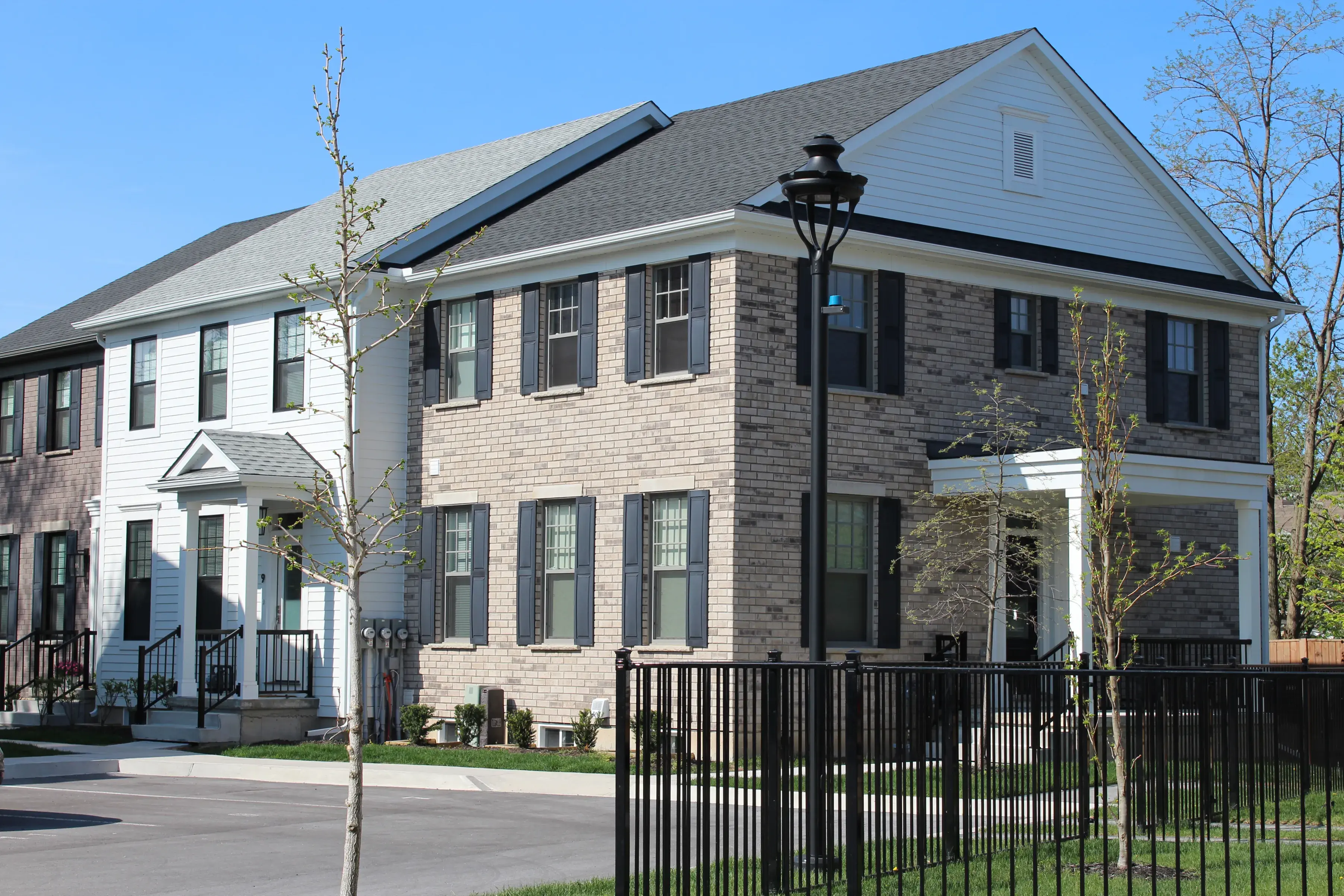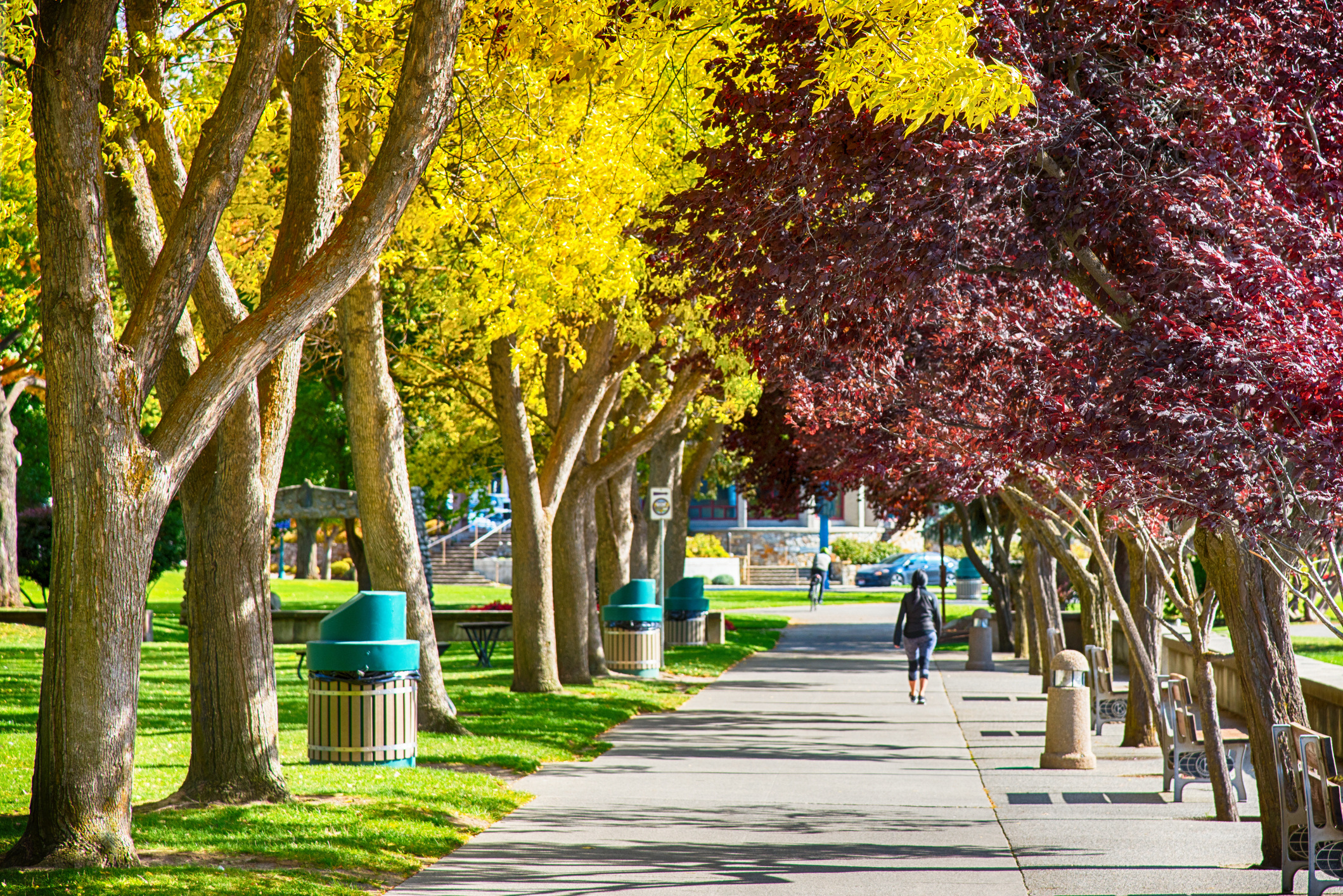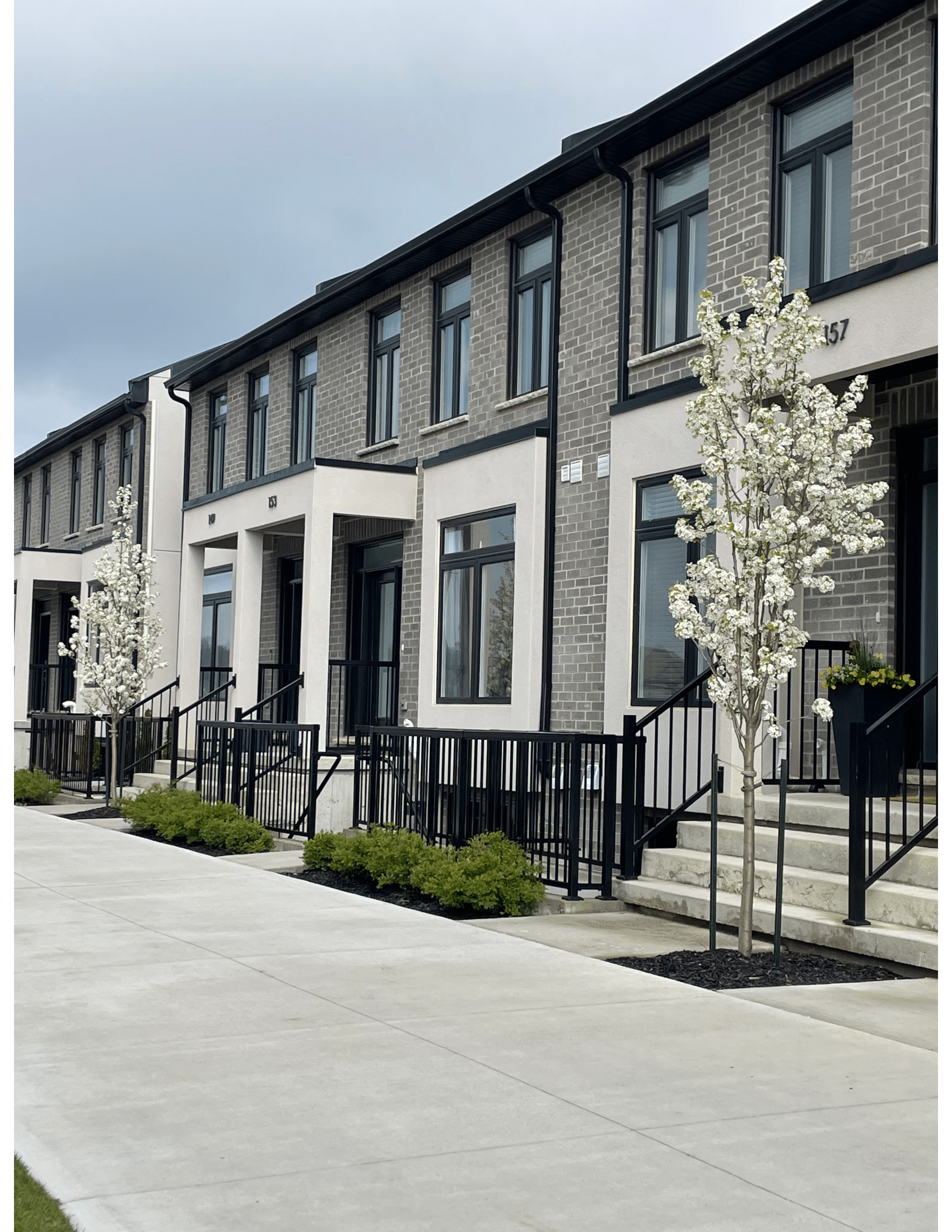Why We Believe in New Urbanism: Principles and Benefits for Niagara Residents

At Elevate Living, our philosophy has always been to fulfill our community’s real estate needs. In Niagara, that translates to providing more housing, more units and more choices! And here’s the thing – finding your home shouldn’t mean settling for less. If you’ve explored our website, you’ve probably noticed we do things a bit differently than other home builders in Niagara. We’re all about New Urbanism, which means we’re committed to enhancing each client’s lifestyle. What does that entail? Keep reading to learn more!
What is New Urbanism?
Established in 1993, New Urbanism is a movement built on the idea that our physical surroundings significantly impact our happiness and prosperity. Advocates of New Urbanism believe that well-designed cities, towns, neighbourhoods and public spaces foster a sense of community, providing environments where people and businesses can thrive. This movement emerged as a response to the collapsing, single-use development patterns that became prevalent after World War II, which have since been linked to negative economic health and environmental outcomes for communities. In the late 1980s and early 1990s, many urban designers, architects, planners, developers and engineers grew disillusioned with these prevailing development practices. Recognizing the need for change, they came together to form New Urbanism. Over the past three decades, the New Urbanist movement has shifted the conversation from debating alternative development forms to discussing how to preserve, design, develop and restore our regions, neighbourhoods and cities. New Urbanists have played a key role in popularizing development patterns and strategies such as mixed-use development, transit-oriented development and traditional neighbourhood design, integrating design standards into affordable housing and designing complete streets that prioritize pedestrians and cyclists. As demand for mixed-use, walkable neighbourhoods continues to grow, New Urbanists remain committed to building upon past successes, establishing new design and development standards and accelerating the pace of change.
10 Principles of New Urbanism
The Congress for New Urbanism recognizes several interconnected challenges facing communities, including disinvestment in central cities, sprawling development that lacks character, increasing segregation by race and income, environmental degradation, loss of agricultural and wilderness areas and the deterioration of historic landmarks. To address these challenges, the Charter of the New Urbanism lays out 10 fundamental principles that can be applied to various types of development, including new construction, urban renewal and historic preservation. These principles are flexible enough to be implemented in diverse settings, ranging from rural areas to bustling suburbs, vibrant urban neighbourhoods and entire regions.
1. Walkability
Walkability lies at the heart of New Urbanism. By prioritizing human scale, communities encourage walking and reduce reliance on cars. Ensuring that daily activities are within a 10-minute walk from home or work is essential, especially for seniors and young people who may not drive. Pedestrian-friendly streets play a key role in promoting walking, with aspects like porches, windows, doors, tree-lined streets, on-street parking, hidden parking lots, garages in rear lanes and narrow, slow-speed streets. An interconnected network of streets further encourages walking, reduces car trips and conserves energy.
2. Connectivity
Streets are more than just pathways for cars; they’re designed for people! Features like parks, plazas and community gardens provide spaces for people to relax and socialize. The goal is to create a sense of place and interconnectivity. Connectivity also refers to supporting multiple types of transit. For example, by creating street grids that encourage walking, we can make neighbourhoods more accessible and connected.
3. Mixed-Use and Diversity
Homebuyers typically won’t find a sense of community in single-use developments because they lack variety. Mixing residential, retail and entertainment spaces, on the other hand, creates diverse neighbourhoods where people actually want to work, live and hang out. Mixed-use communities include apartments, townhomes, condos, single-family homes, duplexes and four-plexes, welcoming residents of all races, cultures, income levels and ages.
4. Mixed Housing
Offering mixed housing is one of the biggest challenges in building communities with a New Urbanist outlook. Zoning restrictions may limit various types of housing due to large minimum square footage requirements. However, as a home builder in Niagara, we work to educate cities about diverse housing types.
5. Quality Architecture and Urban Design
New Urbanism focuses on creating comfortable, aesthetically pleasing communities where everyone feels a sense of belonging. It aims to create streets and public spaces that are accessible and enjoyable for everyone. The architecture and landscape design featured in these neighbourhoods should reflect the local climate, geography, history and building practices.
6. Traditional Neighbourhood Structure
Traditional neighbourhood structure means being able to walk to places within 10 minutes. Every neighbourhood should offer various amenities that residents can easily reach by foot. This includes parks with diverse features like baseball fields, playgrounds and green spaces. Additionally, conservation areas and open spaces could be incorporated to define and connect different neighbourhoods and districts.
7. Increased Density
Having buildings close together makes walking more convenient and saves time that would otherwise be spent driving around town. With shops, services and residences nearby, residents experience unparalleled convenience. Just imagine the free time you’ll have and the reduced stress from avoiding traffic congestion.
8. Smart Transportation
High-quality public transit networks are essential for connecting neighbourhoods, towns and cities. Communities become more desirable when they have easy access to bus or train stops, or when they offer walkability to transportation hubs. Creating pedestrian-friendly environments also encourages residents to use alternative modes of transportation such as e-scooters and bikes, reducing reliance on cars and increasing mobility.
9. Sustainability
Respecting the environment and promoting eco-friendly technology are key aspects of sustainable communities. This involves minimizing our impact on the environment through energy-efficient practices. It’s also crucial to establish a strong connection between the community and surrounding farmland, encouraging the consumption of local goods and preserving valuable land. Just as having a garden is essential for a house, preserving farmland and nature is vital for cities.
10. Quality of Life
Communities where home builders and developers prioritize New Urbanism typically offer a higher quality of life. Concepts like enrichment and a strong focus on cultural and social scenes contribute to this. New Urbanism ensures residents enjoy a good life by including places that inspire, uplift and enhance the human spirit. When working, living and playing are all within a short distance from each other, we thrive.
Benefits of New Urbanism
Community Health Rises
The design of streets, buildings, infrastructure and public spaces greatly affects the health of communities and residents. Research shows that living in compact, walkable neighbourhoods improves health by encouraging more physical activity. In contrast, poorly designed communities can lead to higher rates of obesity and chronic diseases. In suburban areas, activities and buildings are spread out. Instead of walking or biking to school, most children end up getting rides from their parents or taking long bus trips. In car-dependent areas, access to parks and green spaces often requires driving. Additionally, healthcare facilities continue to grow larger and larger, making them less walkable and less connected to nearby neighbourhoods. New Urbanism supports designing neighbourhoods that promote exercise and walkability. The movement aims to improve access to green spaces and services. The overall goal is to create environments where everyone, from the young to the elderly, can live their healthiest lives.
Economic Benefits of New Urbanism
Investing in mixed-use, walkable downtown centres and neighbourhoods offers economic advantages for both individuals and businesses.
Benefits for individuals:
- Increased Property Values: A higher Walk Score, indicating walkability, is associated with a $3,000 increase in house value.
- High Quality of Life: Neighbourhoods with high Walk Scores often have appealing streets and public spaces, contributing to a high quality of life for residents.
New Urbanism Designs With the Environment in Mind
Urbanism champions practical solutions by promoting compact development and the creation of walkable, bikeable streets. These development patterns offer numerous advantages, including improvements in air and water quality, mitigation of climate change effects and preservation of open spaces such as forests, farmland and animal habitats. By focusing on human-scaled places, urbanism helps protect vital natural areas from development while also fostering community engagement. Moreover, compact communities supported by high-quality transit networks and regional collaboration can grow and prosper without sacrificing their unique charm. These communities conserve resources, reduce the need for extensive infrastructure and achieve a better balance between jobs and housing. Additionally, they provide multiple mobility options and significantly reduce greenhouse gas emissions.
Emphasizing multifunctional public spaces not only improves public health and encourages active lifestyles but also reduces the city’s carbon footprint. Ultimately, urbanism promotes sustainable living by creating vibrant communities where people can thrive while minimizing environmental impact.
What Does New Urbanism Mean For Us?
As a home builder in Niagara, we always look for ways to enhance the lifestyle of our community. When we create a new development or build a new home, we aim to improve day-to-day life in the following ways:
- Variety of Housing Options: Housing isn’t one size fits all! We offer different sizes and spaces to suit various people and budgets. Our developments are unique and not cookie-cutter.
- Walkable Developments: Ensuring walkability is a key part of the New Urbanism movement and for good reason! It improves health, in turn reducing health care costs, and decreases air and noise pollution.
- Beautiful and Functional Landscapes: Our landscape plans are not only visually appealing but also provide fresh air and shade.
- Innovative Partnerships: We work with companies like Kite Mobility for car-sharing programs, and offer e-scooters, e-bikes and SmartONE Technology for better connectivity.
To integrate these principles, we currently offer three services in Niagara: compact real estate development (inspired by New Urbanism), purpose-built rental apartments and new home building with accessory units.
Compact Real Estate Development
The need for housing is real. Meeting this need without losing what makes a community special requires a thoughtful approach. Guided by New Urbanism principles, we strive to create real estate developments that prioritize the residents. This means building mixed-use and residential developments within existing neighbourhoods to enhance density, character and walkability. We focus on designs that reduce the need for cars and offer various housing options for all age groups, genders, family sizes and living situations, making it easier for everyone to find a home. Our compact real estate developments also include features that prioritize community and lifestyle. We foster public and private partnerships whenever possible to improve the quality of life for future residents. Check out our current developments here.
Purpose-Built Apartments
Our purpose-built apartments are located in prime spots across the Niagara Region, ensuring you’re connected to everything you need. These brand-new apartments feature open-concept designs and SmartONE Technology, which offers enhanced building security and connectivity to local businesses and events, all accessible through an app on your phone. Discover more about our purpose-built apartments and the great incentives they offer here.
Home Builder
Our goal is to enhance lifestyles through innovative homeownership opportunities while embracing the New Urbanist Development philosophy. We create and build innovative infill housing solutions to meet Niagara’s current and future needs. These solutions focus on filling gaps, like vacant lots or underused spaces, with well-designed, sustainable and efficient housing. As an innovative infill home builder, we use modern construction techniques, green building practices and smart design to improve livability and community integration. This approach helps address housing shortages, reduce urban sprawl and promote vibrant diverse neighbourhoods while efficiently using existing resources. Our portfolio includes townhomes with accessory units, multi-unit buildings and single-family homes. Take a look at some of our completed projects here.
Discover New Urbanism With Elevate Living!
Experience the benefits of New Urbanism first-hand! Whether you’re a first-time homebuyer, a relocating professional, or a retiree, enjoy the convenience of a community designed for your lifestyle. Investors, too, can benefit from great opportunities for rental income or property value growth. Get in touch with us today to explore our building and development services further.


